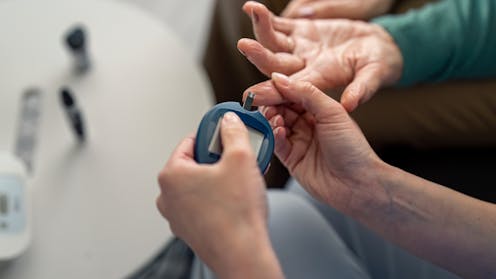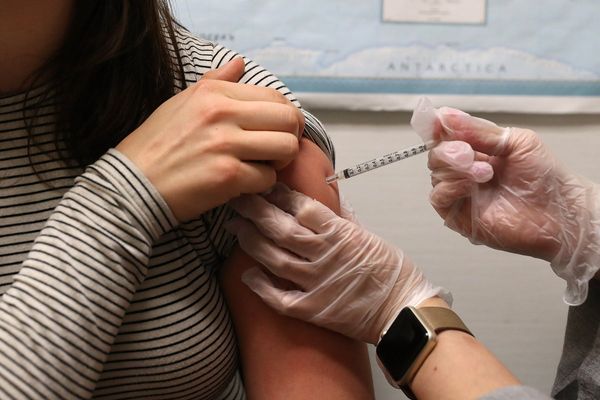
For more than a century, type 1 diabetes has meant one thing: a lifetime administering insulin. But for the first time, science is breaking that paradigm – not by managing the disease, but by intercepting it before symptoms even appear.
As the first patients in the UK begin receiving the groundbreaking new therapy, teplizumab, we are developing ways to identify who might benefit from a drug that only works if given before any symptoms appear. At the Royal Devon NHS, we are currently treating the first UK adult, Hannah Robinson, who was found to have early type 1 diabetes by chance during routine pregnancy screening.
About 10% of people with diabetes have type 1, while the remaining 90% have type 2, a condition linked to lifestyle factors where insulin is still produced but does not work properly. Type 1 diabetes is an autoimmune condition that leads to complete loss of insulin production from the pancreas. Without insulin, blood sugar levels rise dangerously, increasing the risk of blindness, kidney failure and early death.
Although type 1 is often thought of as a disease of childhood, research from the University of Exeter has highlighted that more than half of all new cases occur in adults.
For millions around the world living with type 1 diabetes, treatment to keep blood sugar in check means lifelong daily insulin. However, using insulin comes with its own risks.
If blood sugar drops too low, it can cause hypoglycaemia, or “hypos”, which in severe cases may lead to seizures or even death. It is no surprise that constantly balancing between high and low blood sugars takes a heavy toll on both physical and mental health. During her pregnancy, Robinson needed insulin and saw firsthand how “life completely revolves around balancing your blood glucose”.
Teplizumab offers a completely different approach. Instead of simply replacing insulin, it targets the immune attack that causes type 1 diabetes.
Our immune system is usually remarkably good at telling friend from foe, protecting us from infections and cancer while leaving our own organs alone. But sometimes, for reasons still not fully understood, this balance breaks down in a process known as autoimmunity. In type 1 diabetes, the immune system mistakenly attacks the pancreas, destroying insulin-producing cells.
Teplizumab works by retraining the immune system and dialling down the specific cells that target the pancreas. Studies show it can delay the disease and the need for insulin therapy by two to three years, with generally mild side-effects. For Robinson, who knows all too well from pregnancy and the full-time job that is living with type 1 diabetes, the possibility of a few extra years without insulin really mattered.
The drug is already approved in the US and is under review for routine NHS use, although a few children and teenagers in the UK have also received it through special access programmes.
Finding people early
There is a catch. By the time people develop symptoms of type 1 diabetes, such as thirst, weight loss and fatigue, more than three-quarters of their insulin-producing capacity is already destroyed.
For teplizumab and similar therapies to work, they need to be given before symptoms appear, while blood sugar levels are still normal. This means these treatments are not an option for people who already have established type 1 diabetes.
So how do we find people at this early stage? Fortunately, it is possible to detect the beginnings of the autoimmune attack many years before symptoms show using simple blood tests that measure immune markers called pancreatic autoantibodies.
Just a few drops from a finger prick can reveal whether the immune system has started to target the pancreas. Finding people early not only offers the chance to delay disease progression, it can also help avoid the life-threatening emergencies that sometimes come with a first diagnosis – such as diabetic ketoacidosis.
With type 1 diabetes affecting roughly one in 200 people, there is still the question of who to test. Not everyone’s risk is the same. When we think of inherited diseases, we often imagine conditions caused by a single gene change, such as cystic fibrosis.
Type 1 diabetes does have a genetic component, but it involves many different genes, each nudging a person’s risk up or down. Having genetic risk alone is not enough, with unknown environmental factors also needed to tip the balance.
Nine in ten people who develop type 1 diabetes have no family history. While testing relatives of people with type 1 is a logical first step, research at the University of Exeter suggests that combining all these genetic factors into a single risk score could help predict who might develop the disease and identify babies who should be monitored more closely. This could become an important tool as we move towards wider genomic screening.
It is still early days, but we are seeing a fundamental shift in how we approach type 1 diabetes. For more than a century, treatment has meant patients taking on the daily burden of replacing the insulin their bodies can no longer make. Now, the focus is turning to therapies that tackle the immune problem at its source, with the hope of stopping the disease before it fully develops and opening the door to an insulin-free future.
Richard Oram has received research grants or contracts from Randox and Sanofi. He has also received royalties and license from Randox, consulting fees from Sanofi, Provention Bio, and Janssen and payment or honoraria from Sanofi and Novo Nordisk. He has served on data safety monitory board or advisory board for Sanofi.
Nicholas Thomas serves on an advisory boards for Sanof (manafacturer of Teplizumab) guiding the technical delivery of therapy within the NHS. He is currently employed by Exeter University as an NIHR Academic Clinical Fellow.
This article was originally published on The Conversation. Read the original article.







